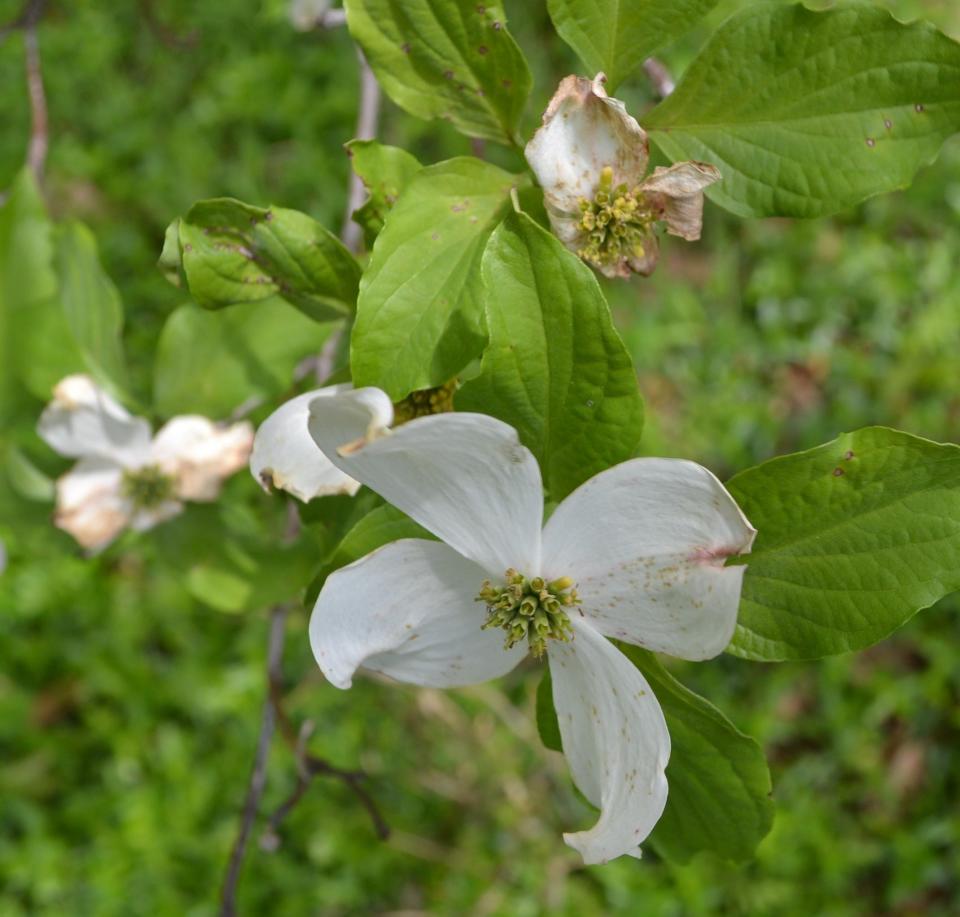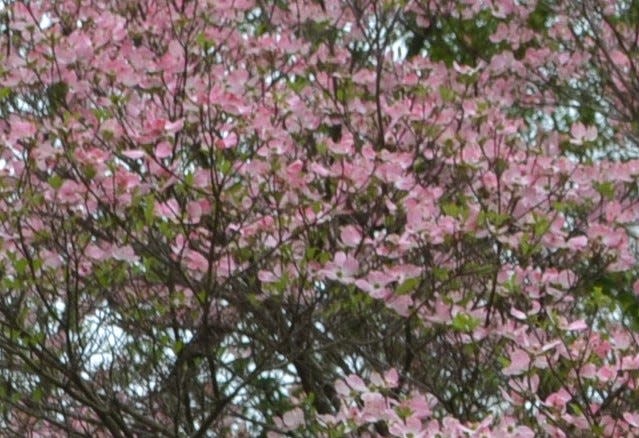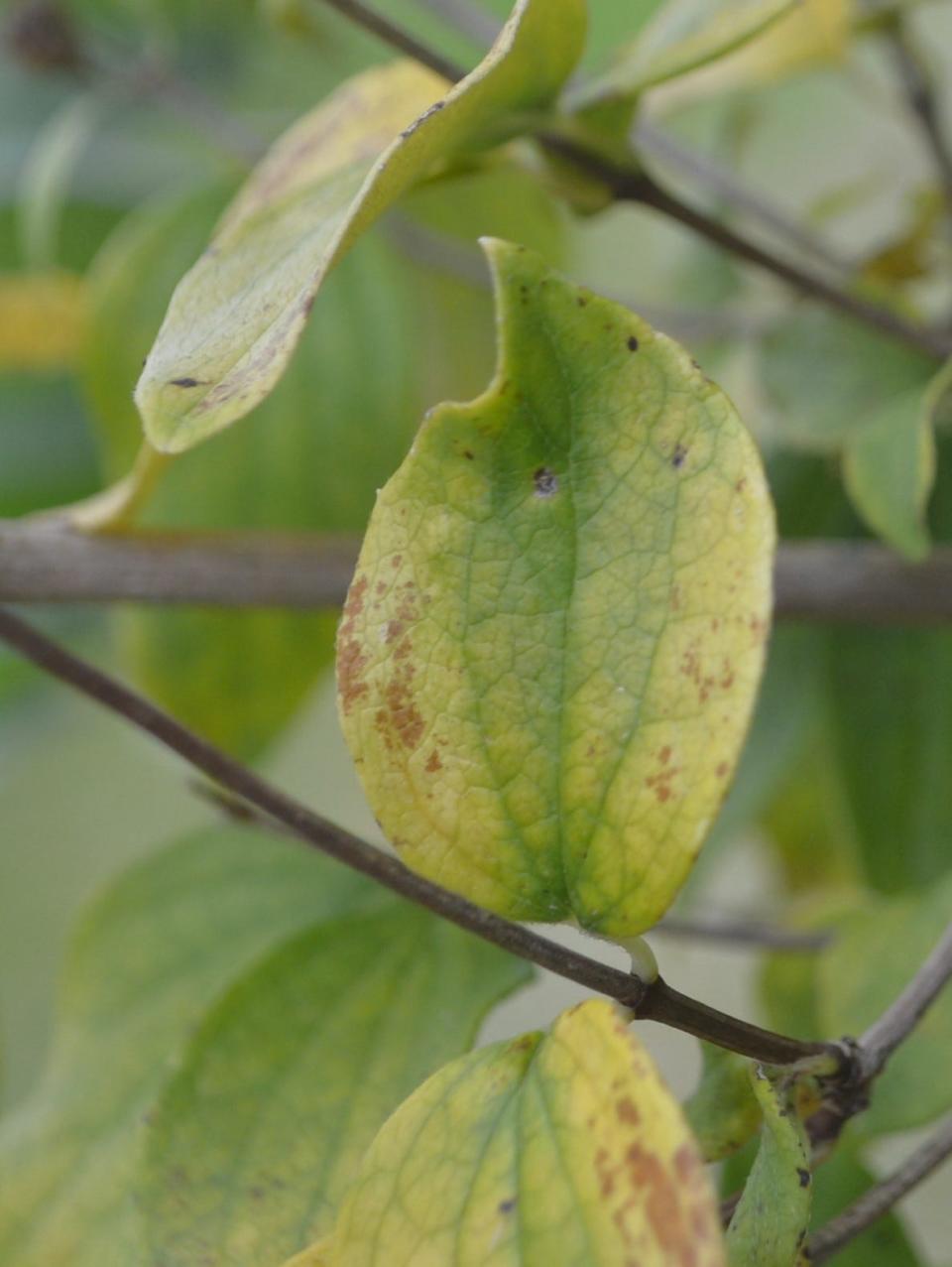A Stroll Through the Garden: Identifying and dealing with verticillium and anthracnose
A few years ago, I had a client who had my team site a variety of plants for her. She also had me take a hard look at one of her lilacs. I took my normal analysis of what was going on with the lilac and concluded that the plant had a disease called verticillium wilt with the scientific names of verticillium dahliae or verticillium albo-atrum.
The symptoms were conclusive. I had taken a small branch that looked diseased and cut off enough to get to the heart of the wood. The heartwood had an olive color, which made it conclusive. Unless something is done with this disease, it will remain in the soil for a period of time and may weaken the plant enough to kill it.
Lilacs are truly susceptible to verticillium wilt, but dogwoods are not. This wonderful lady, who is also a reader of my column, loved the work we did so my hope was to give her some ideas about what might be happening to her dogwood.

One plant I do remember in her yard was this unusual dogwood. It was supposed to have pink flowers. I recall seeing these beautiful pink flowers on this tree. One thing to keep in mind with an unusual plant is that there are varieties you will encounter that are not as strong as the standard species. In other words, a white dogwood would be stronger and more able to endure diseases and other plant pests.
This does not mean that any plant can recover from a disease and frequently the unusual qualities of certain plants can be well worth growing.
One of my clients from Loudonville called me many years ago about dogwoods. As I remember, the house was on the side of a hill, and there were two white dogwoods at the back of the house. It was a beautiful setting and the view was great. The challenge was the dogwood that was having the most trouble was a little lower than the dogwood that was a little higher on the hill. Both of these trees did die. How close trees are to one another can have a serious effect on other trees nearby.

Controlling anthracnose disease
These two dogwoods had a disease called anthracnose. Dogwood anthracnose, or discula destructiva, is a fungal disease that infects developing shoots and foliage. The most prominent symptom is tan, brown or black leaf spots with a purple halo around the spot and flower spots on the edges of the petals. Younger infected leaves can also become curled. It eventually causes leaf drop and twig dieback. This disease can cause younger tree branches and trunks to develop a canker.
To control this disease, you can prune away infected twigs and branches during fall or winter; remember to dip pruners in methyl alcohol after every cut. As with any pruning, you should consider fertilizing to encourage some healthy growth and avoid watering tree foliage. There are a number of different types of fungicides that will help. In dogwoods, this can be a fatal disease. Do not use any wood from the tree as a mulch.
My favorite way of controlling either of these diseases is to plant trees that are resistant to the disease. If you must have a plant that is susceptible to one of these diseases, make sure that you plant this susceptible plant in a location that would be considered ideal and provide extra care for this plant. Not having to deal with the problem is much better than going through the exercise to find out the solution.

One of the other diseases that curl leaves is a fungal disease called verticillium wilt that attacks trees and woody ornamentals. This verticillium wilt is a soil-borne disease that infects trees through their roots and damages vascular tissue of trees. Symptoms of the disease include leaf yellowing, curling, small foliage, dried-out foliage and dark streaks within the tree’s water coloring tissue.
Experts at the University of California Integrated Pest Management Program recommend fumigating the soil to control severe infections to prevent death of the trees. Some infections are recurring but not severe enough warrant the use of potentially hazardous fumigants. Methyl bromide and chloropicrin are very serious fumigants and require special permits to purchase. This disease can also be deadly for the plant.
I hope that you have a wonderful stroll through your garden this week. Take time to smell the flowers every day. We are on the downhill slide of summer. As you stroll through your garden and have a question, send me an email with what you saw and I shall do the best I can to help. My email is ericlarson546@yahoo.com. I shall put this column in a blog and allow you to have a chance to comment at ohealthyfoodcooperative.org.
Eric Larson of Jeromesville is a veteran landscaper and gardening enthusiast and a founding board member of the Ohio Chapter of Association of Professional Landscape Designers.
This article originally appeared on Mansfield News Journal: Anthracnose in dogwood and Verticillium in lilac

